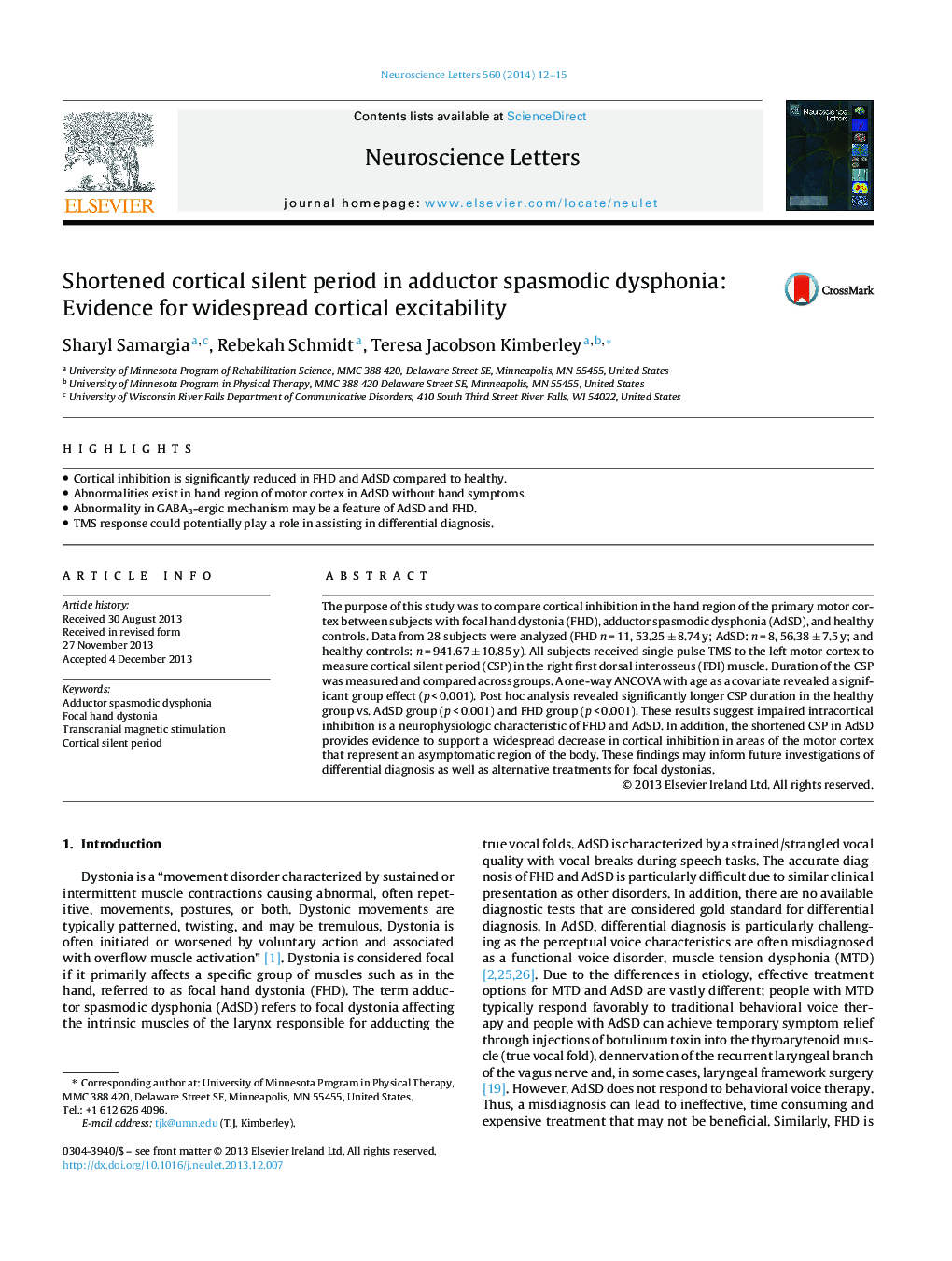| Article ID | Journal | Published Year | Pages | File Type |
|---|---|---|---|---|
| 6282295 | Neuroscience Letters | 2014 | 4 Pages |
Abstract
The purpose of this study was to compare cortical inhibition in the hand region of the primary motor cortex between subjects with focal hand dystonia (FHD), adductor spasmodic dysphonia (AdSD), and healthy controls. Data from 28 subjects were analyzed (FHD n = 11, 53.25 ± 8.74 y; AdSD: n = 8, 56.38 ± 7.5 y; and healthy controls: n = 941.67 ± 10.85 y). All subjects received single pulse TMS to the left motor cortex to measure cortical silent period (CSP) in the right first dorsal interosseus (FDI) muscle. Duration of the CSP was measured and compared across groups. A one-way ANCOVA with age as a covariate revealed a significant group effect (p < 0.001). Post hoc analysis revealed significantly longer CSP duration in the healthy group vs. AdSD group (p < 0.001) and FHD group (p < 0.001). These results suggest impaired intracortical inhibition is a neurophysiologic characteristic of FHD and AdSD. In addition, the shortened CSP in AdSD provides evidence to support a widespread decrease in cortical inhibition in areas of the motor cortex that represent an asymptomatic region of the body. These findings may inform future investigations of differential diagnosis as well as alternative treatments for focal dystonias.
Keywords
Related Topics
Life Sciences
Neuroscience
Neuroscience (General)
Authors
Sharyl Samargia, Rebekah Schmidt, Teresa Jacobson Kimberley,
